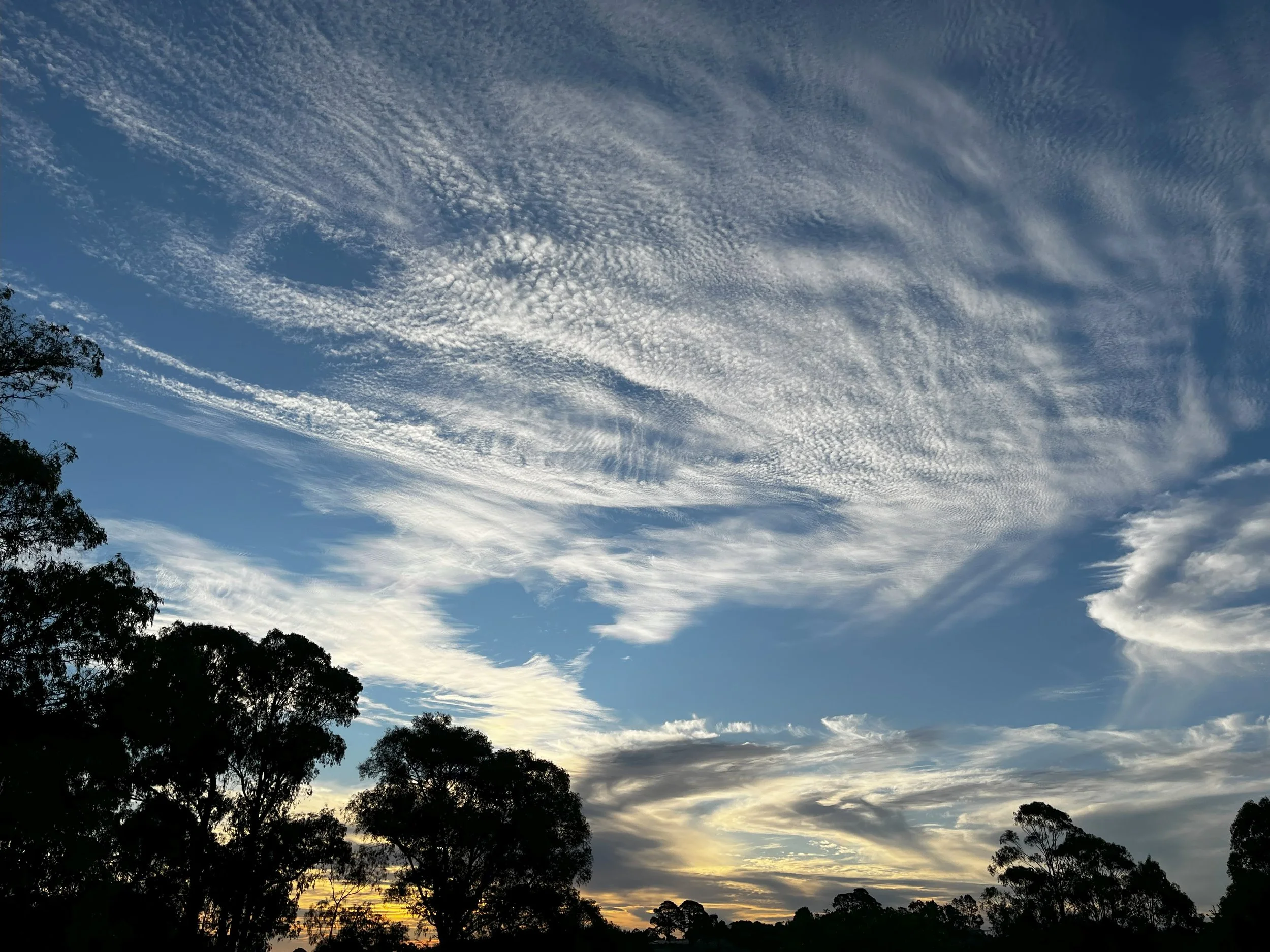Designing with Nature: A Deep Dive into Textural Minimalism and Architectural Woolwork
Eucalyptus cinerea leaf dye on grey wool, hand spun single yarn
Hand-spinning is an act of transformation—raw fibre becomes yarn, yarn becomes fabric, and fabric becomes something deeply personal. Lately, I’ve been reflecting on how this transformation relates to the natural world, architecture, and the way we experience materials in our hands and on our bodies.
At the core of my current project is an exploration of Eucalyptus regnans, the Mountain Ash—a tree that embodies both monumentality and subtlety, silkiness and roughness, structure and movement. This reflection is shaping the way I design two pieces:
A finely hand-knitted shawl—a semi-rectangular piece that balances crisp architectural form with a soft, draping quality.
A simple woven wrap—a counterpoint to the knit, where structure and flow come through the weaving process rather than stitch definition.
Both will be made from my naturally dyed hand-spun yarn, fibres blended to create muted, tweedy colours that evoke the tones of eucalyptus bark, leaves, and the landscape itself where I walk. But this is more than just an aesthetic exercise—it’s about pushing deeper into the relationship between material, environment, and design.
Architectural Inspiration: The Mountain Ash as a Design Concept
Scale vs. Intimacy
Eucalyptus regnans is the world’s tallest flowering tree, reaching heights of over 100 meters. There’s something awe-inspiring about that sheer verticality—but how does one translate such grandeur into a wearable piece?
A large rectangular wrap naturally lends itself to scale, but does that risk feeling too expected?
Should the shape be subtly broken or tapered, mimicking the natural irregularities of bark peeling or the movement of light through the canopy?
Would working on the bias or incorporating short-row shaping create a sense of organic movement, rather than a rigid, static rectangle?
For the knitted shawl, I’m exploring subtle asymmetry—a slight shift in shaping or patterning to capture the way trees grow in response to their environment, not in perfect symmetry but in dynamic balance. The woven piece, by contrast, will embrace the grid-like logic of weaving, letting the tension of the warp and weft structure the fabric in a different way.
The old cotton cloth used to filter the madder dye ‘grounds’ before dyeing the wool top. The cloth has become inspiration for the design of the simple woven wrap. Looking closely at the cloth weave, can you see that it has a double-weave structure with two layers intersecting on the grid.
Texture, Light, and Shadow: A Minimalist Approach
The textures I’m drawn to—broken rib, garter rib, seed stitch—all carry a quiet sophistication. They interact with light in interesting ways, creating depth and shadow while remaining understated. But the question is: should the texture be purely elegant, or should it carry an element of disruption?
Minimalism vs. Rawness
A perfectly balanced broken rib pattern could create a refined, architectural surface.
But what if I break the rhythm—introducing occasional irregularities, like the unpredictable texture of eucalyptus bark?
Would an area of more rugged texture make the piece feel alive, rather than just aesthetically controlled?
For the woven version, the question shifts: how does tension, density, and yarn variation create a similar textural depth? A slightly slubby, irregular yarn will create shadow and movement in the weave, without relying on patterning.
Materiality and Climate Response
Wool is a material deeply tied to climate and presence. It breathes, insulates, shifts with the body. My naturally dyed yarn—some from eucalyptus bark, some from other plant-based sources—grounds this piece in an environmental context.
Wool is an ancient climate-responsive fiber. How can my design emphasize its adaptive qualities, not just its aesthetic ones?
If the knit piece is meant to be fluid, cocooning, protective, should it include areas of looser gauge or openwork, allowing for greater breathability?
Should the woven version be tightly structured, like an architectural façade that holds warmth, or more loosely woven to encourage drape?
This also brings up a deeper reflection: What climate does this piece belong to? It’s easy to design with function in mind (a warm wrap for cold weather), but I also want it to embody a sense of place—to feel like it belongs to the landscape from which its colors and fibers emerged.
Setting sun over my walking grounds, where the trees grow and inspiration comes.
The Act of Wearing: Stillness vs. Motion
A eucalyptus forest is a space of stillness and height, yet also movement and breath. The human body is horizontal, warm, shifting through space. How does this textile interact with that reality?
A stiffly structured wrap might sit beautifully, but would it feel static, or even restrictive?
Should the knitted piece flow and adjust, its shape shifting as it moves across the body?
Could the woven wrap evolve with wear, softening, draping differently over time, absorbing the imprint of its wearer?
This brings in the mindfulness of making and wearing. Hand-spinning, natural dyeing, knitting, and weaving are all slow processes—they demand presence, attention, patience. Can the final piece encourage that same slowness, both in how it’s made and how it’s worn?
Walking in places of deep inspiration
Final Thought: Should the Design Whisper, or Should It Speak?
At this stage, my design sits in a place of balance and quiet sophistication. The concept is refined, elegant, subtle. But the best architectural designs—whether in buildings or textiles—always carry a moment of tension.
Should I introduce an unexpected break in the pattern, a deliberate disruption?
Would a sharper contrast in texture or density bring the piece to life?
Or is the radical act here actually restraint—executing something so precise and understated that its power comes from its discipline?
As I begin to spin, blend, and swatch, these are the questions I’ll sit with.
Would love to hear thoughts—do you lean towards pure minimalism, or do you think a design needs a moment of disruption to feel alive?






























